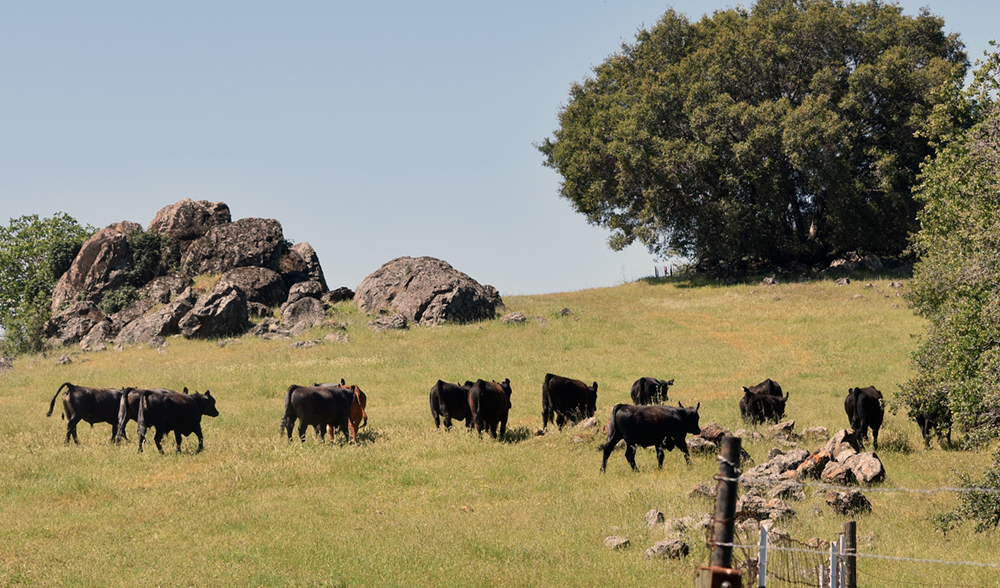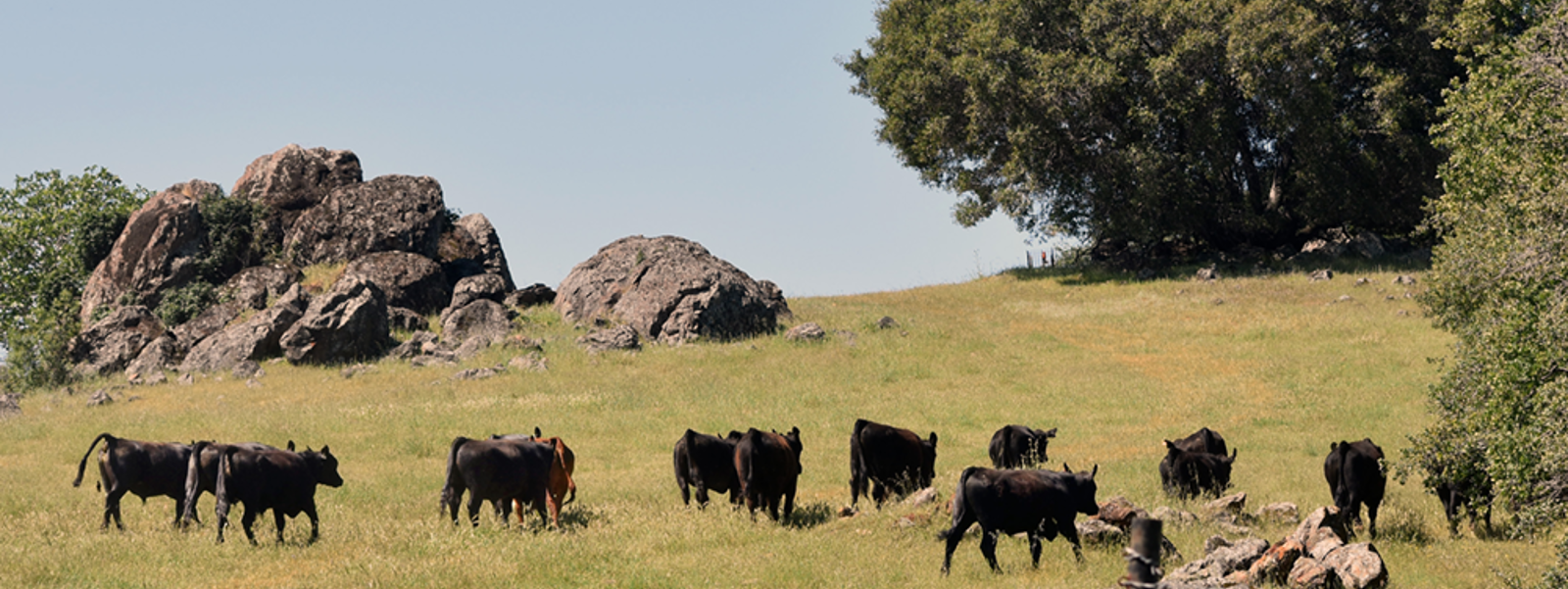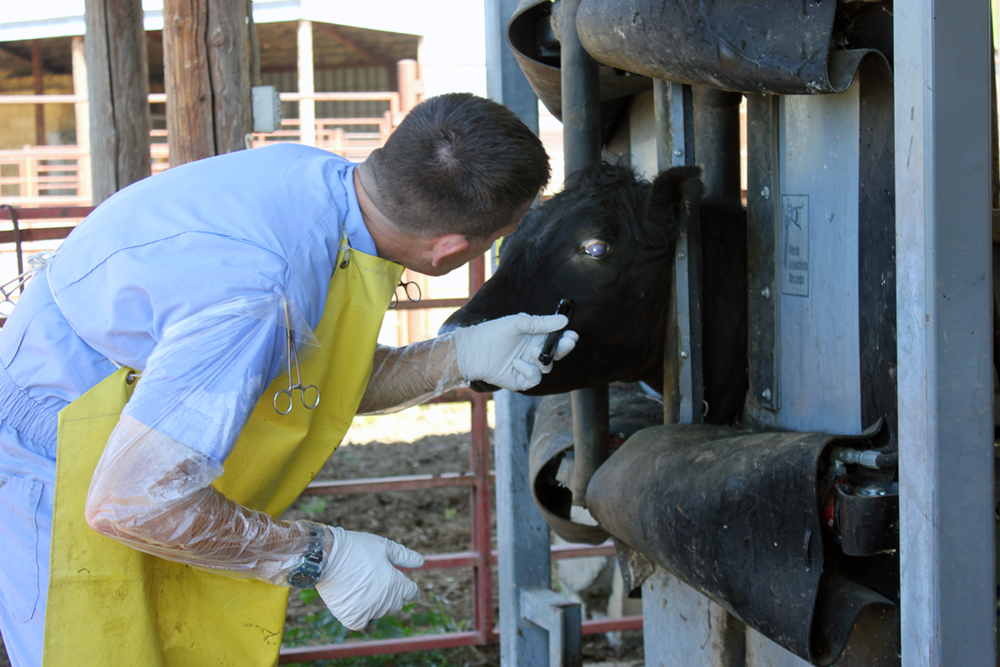Foothill center offers vital grounds for cattle studies

These cattle at the University of California Sierra Foothill Research Extension Center in Browns Valley are part of a study on administering an ionophore feed additive, monensin, to promote weight gain. The Yuba County property facilitates cattle ranching research, hosting livestock and researchers for as many as 20 study projects at any given time during the year.
Photo/John Watson


Photo/John Watson
By John Watson
During the summers of 2021 and 2022, as cattle roamed pastures and shaded woods of the University of California Sierra Foothill Research and Extension Center in Browns Valley, a UC Davis research team closely monitored potential ties between each animal’s personality and its grazing habits.
The project, resulting in a peer-reviewed paper published this past February, was just one of hundreds of studies conducted at the center in Yuba County during the past six decades.
Stretching across more than 5,700 acres of river, grassland, oak woodland and riparian habitat, the center supports research on beef cattle production, nutrition and health, rangeland water quality management, oak woodland restoration, native plant conservation and invasive plant management, among other related topics.
A hefty percentage of the studies the center supports aims to make cattle ranching more productive and profitable.
The cattle personality study, for instance, looked at benefits of matching herds to landscape. It analyzed whether selecting or subdividing herds by personality type could serve as an alternative to placing expensive incentives in undergrazed—and often higher-elevation—parts of the pasture, trying to lure herds to those spots.
The study hypothesis: There might be little need for water, mineral supplements, fencing or other incentive methods in undergrazed pastureland if the herd comprises very active, hill-climbing animals to begin with. In other words, could consideration of personalities optimize cattle distribution on rangeland?
The study, a part of UC Davis graduate Maggie Creamer’s doctoral dissertation, investigated the consistency of grazing patterns across two summers among 50 2- to 8-year-old pregnant Angus and Hereford beef cows, all fitted with GPS collars. Over two summers, they roamed 625 acres of grasslands and treed areas, elevation of which ranged from 600 to 2,020 feet.
The results show animals that were generally calmer—for example, when being handled or going through a chute—tended to graze more widely than animals that were skittish and nervous. Those grazing behaviors remained largely unchanged when a water site incentive was introduced at higher elevation in year two.
“Before opting for expensive interventions to get cattle to graze a different way, ranchers might want to explore this topic,” said Creamer, who now works as a postdoctoral scholar in North Carolina.
Kristina Horback, an associate professor at the UC Davis Department of Animal Science, joined Creamer in presenting their findings in a study published in February in the journal Applied Animal Behaviour Science. She explained that fertile areas for further study include the role that genetics and breeds might play in determining personality traits, along with investigations involving different landscapes and analyses of individual behavior when the animal is handled.
Formed in the 1960s as one of nine such units administered by UC Agriculture and Natural Resources, the Sierra research center provides a setting that, at any given time, supports some 20 research projects.
Current studies include an investigation into the most effective ways to administer daily doses of the ionophore monensin, with the goal of increased cattle weight gain. Monensin encourages bacteria shift of rumen microbes that increase the production of propionic acid, which in turn enhances weight gain through more efficient conversion of feed to volatile fatty acids. A dose of 50 milligrams a day has proven to improve weight gain, and some studies have shown more gains with rates up to 200 milligrams a day.
The problem is underconsumption: Because monensin isn’t very palatable, it’s difficult to entice cattle to consume the higher doses. The study used 140 cattle to analyze multiple consumption rates of two alternative dosage methods: free-choice loose mineral and salt blocks. Results will be tabulated this summer.
“We have to bring the cattle in every 45 days and change pastures seasonally, which is more than we could ask of local cooperators,” said co-principal investigator Josh Davy, in a nod to the center’s ability to navigate constraints faced by commercial growers or landowners.
“The center’s staff members always create a positive working environment for collaboration and good solutions,” he added.
Another current project deals with a type of seaweed, Asparagopsis taxiformis, known to reduce methane production in cattle by up to 90%. With some similarities to the monensin project, the primary objective of this study is to validate a practical method through which a seaweed supplement can be fed to range livestock.
Ongoing studies also include a project that explores augmenting cattle immune systems to combat pinkeye, the most common eye disease of cattle in the United States.
For the project, cattle consume iodine in the form of ethylenediamine dihydroiodide, or EDDI, which supplements a naturally occurring immune mechanism, resulting in a potent antibacterial and antiviral compound. The goal is to determine whether feeding iodine via a mineral mix using EDDI can achieve iodine target concentrations in tears to inactivate the bacterium that causes pinkeye.
The Sierra Foothill Research and Extension Center includes 160 acres of irrigated pasture, 270 acres of long-term ungrazed oak woodland and 200 acres of control-burned rangeland annually. Its rolling to steeper-sloping terrain ranges from 220 to 2,020 feet above sea level, with access to the Yuba River and six small permanent streams. Research requests for land, labor and facilities are screened by a research advisory committee.
“SFREC is one of the jewels of the UC system,” said Anthony O’Geen, a UC Cooperative Extension soil resource specialist. “It’s a beautiful place with managed and pristine ecosystems, resourceful staff to support research and outreach and wonderful soils. It’s the perfect natural laboratory.”
(John Watson is a reporter in Nevada County. He may be contacted at john.watson@comcast.net.)




